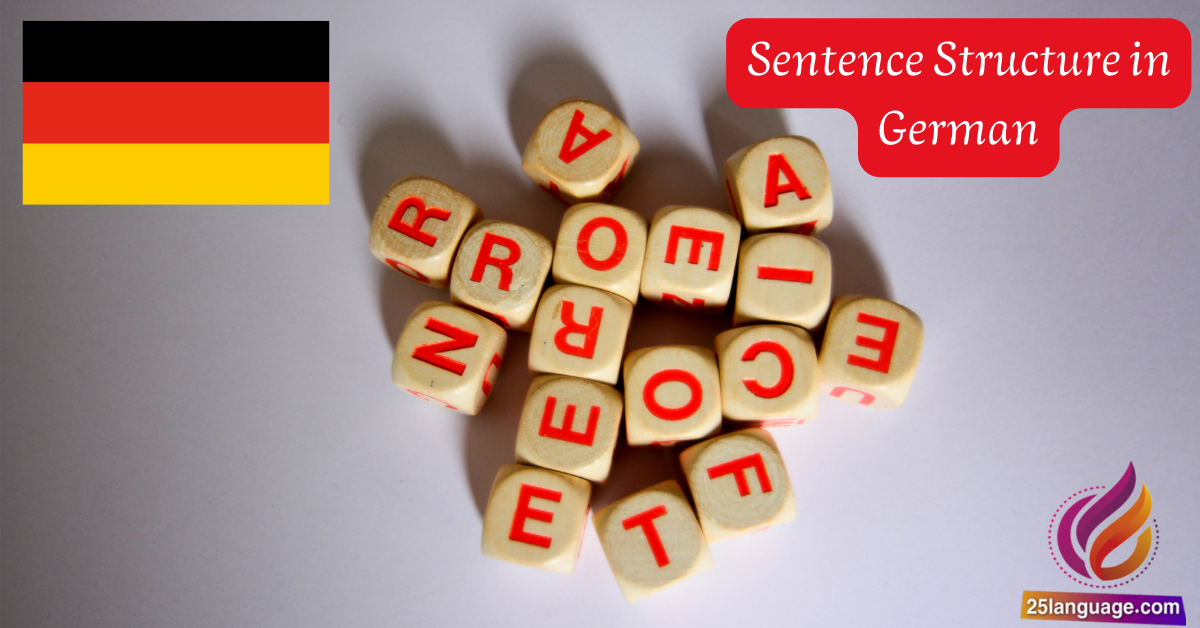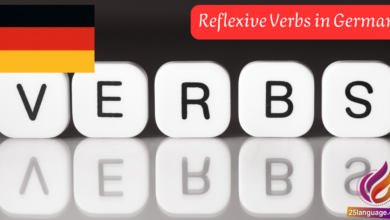Understand Sentence Structure in German

Unlocking the secrets of sentence structure in German opens the door to fluent communication and deeper understanding of the language. Unlike English, German follows a unique flow that can seem puzzling at first, but fear not! By mastering the placement of verbs, nouns, and other elements, you’ll gain the confidence to express complex ideas with clarity. Get ready to transform your sentences and watch your language skills flourish!
Understanding the Foundations of German Sentence Structure
Understanding sentence structure is crucial for mastering German. German sentences typically follow a SVO (Subject-Verb-Object) order in main clauses.However, there are some variations based on the verb’s position, especially in subordinate clauses. Here are some key points to remember:
- Main Clauses: In a simple main clause, the subject comes first, followed by the verb and then the object. Such as: Ich sehe den Hund. (I see the dog).
- Verb Position: In questions, the verb usually comes first: Sieht er den Hund? (Does he see the dog?).
- Subordinate clauses: In subordinate clauses, the verb goes to the end: Ich weiß, dass er den Hund sieht. (I know that he sees the dog).
Adjectives and adverbial phrases also play a key role in enhancing sentence structure. In German, adjectives typically precede the nouns they modify and must agree in gender, number, and case. Consider the following examples:
| German exmaple | Rule | English Translation |
|---|---|---|
| Der große Hund | adjectives precede nouns and must agree in gender & case | The big dog |
| Ich habe schnell gegessen | Adverbs usually follow the verb | I ate quickly |
| Die alte Frau gibt dem kleinen Jungen das Buch | Maintain SVO order in main clauses | The old woman gives the little boy the book |
Mastering Word Order: Building Blocks of German Sentences
In German, the structure of a sentence is crucial for understanding the meaning. The basic word order in a German main clause typically follows the pattern of Subject-Verb-Object (SVO), wich is similar to English.Though, German allows flexibility due to its case system, meaning the object can sometimes appear before the subject or verb for emphasis. Here are some key points regarding German word order:
- In a simple statement: Subject - verb - Object
Example: Ich (subject) lese (verb) das Buch (object). (I read the book.) - When emphasizing the object: Object – Subject - Verb
Example: Das Buch (object) lese (verb) ich (subject). (The book, I read.)
In subordinate clauses, word order changes significantly; the finite verb moves to the end of the clause. Here, it’s essential to recognise the role of conjunctions. Common subordinating conjunctions include dass (that), weil (because), and <em{ob (if/whether):
| German Example | Word Order Rule | English Translation |
|---|---|---|
| Ich denke, dass er kommt. | Subordinate clause moves the verb to the end. | I think that he is coming. |
| Sie bleibt zu Hause, weil es regnet. | Subordinate clause with conjunction. | She stays at home as it is indeed raining. |
| Er fragt, ob du morgen kommst. | Verb at the end in the subordinate clause. | He asks if you are coming tomorrow. |
Navigating complex sentences in German with Ease
In German, complex sentences frequently enough involve the use of dependent clauses, which are introduced by conjunctions such as weil (as), wenn (if/when), dass (that), or <strong(obwohl (even though). These conjunctions allow learners to connect ideas and express relationships between diffrent clauses. When constructing a sentence with a dependent clause, it is crucial to remember that the finite verb typically moves to the end of the clause. For example:
- Ich lerne Deutsch, weil ich in Deutschland leben möchte.
(I am learning German because I wont to live in Germany.) - Wenn es regnet, bleiben wir zu Hause.
(If it rains, we will stay at home.)
Another critically important aspect of navigating complex sentences in German is the use of relative clauses, which provide additional information about a noun. Relative clauses are introduced by relative pronouns such as der, die, das (who, which, that). Similar to dependent clauses, the verb in a relative clause is placed at the end. Here are some illustrative examples:
| German Example | Rule | english Translation |
|---|---|---|
| Der Mann, der hier wohnt, ist sehr freundlich. | Relative clause with der | the man who lives here is very amiable. |
| Die Frau,die das Buch liest,ist meine Freundin. | Relative clause with die | The woman who is reading the book is my friend. |
Practical Techniques for Effective German Communication
Effective communication in German greatly relies on mastering essential vocabulary and grammatical structures. One important aspect is the use of articles, which can be definite (der, die, das) or indefinite (ein, eine).Articles must agree with the noun in gender (masculine, feminine, or neuter) and case (nominative, accusative, dative, genitive). For example:
- Masculine: der Mann (the man) – eine Tasse (a cup)
- Feminine: die Frau (the woman) – eine Blume (a flower)
- Neuter: das Kind (the child) – ein Buch (a book)
Another critical area is verb conjugation, especially in the present tense. Regular verbs have standard endings that change based on the subject pronoun. For example, the verb “spielen” (to play) conjugates as follows:
| Pronoun | German | English |
|---|---|---|
| ich | spiele | I play |
| du | spielst | you play (informal) |
| er/sie/es | spielt | he/she/it plays |
| wir | spielen | we play |
| ihr | spielt | you play (plural informal) |
| sie/Sie | spielen | they/You play (formal) |
Learning these fundamentals will aid in forming coherent sentences and expressing ideas more fluently. For example, “Ich spiele Fußball” translates to ”I play football,” which utilizes both the correct subject pronoun and verb form.
The Conclusion
Herzlichen Glückwunsch zum Abschluss unserer Lektion über die deutsche Satzstruktur! Heute haben wir die grundlegenden Elemente untersucht, die unsere Sätze im Deutschen formen, einschließlich der Wortstellung, der Bedeutung von Subjekt, Prädikat und Objekt sowie den Einsatz von Nebensätzen. Wir haben auch gesehen, wie wichtig es ist, die Satzmelodie und den richtigen Fluß zu verstehen, um klar und effektiv zu kommunizieren.
Es ist normal, sich anfangs herausgefordert zu fühlen, aber denken Sie daran: Übung macht den Meister! Versuchen Sie, die neuen Kenntnisse in Ihrem Alltag anzuwenden. Schreiben Sie kurze Sätze, sprechen Sie mit anderen und hören Sie aufmerksam zu, wenn Deutsch gesprochen wird. Jeder Satz,den Sie bilden,bringt Sie ein Stück näher zum flüssigen Sprechen.
Lassen Sie sich von Ihren Fortschritten motivieren, und scheuen Sie sich nicht, Fragen zu stellen und weiter zu üben. Ihre Entschlossenheit und Ihr Engagement werden belohnt – Schritt für Schritt werden Sie die Schönheit und Komplexität der deutschen Sprache meistern.Vielen Dank, dass Sie heute dabei waren, und viel Erfolg auf Ihrem weiteren Sprachweg!





























